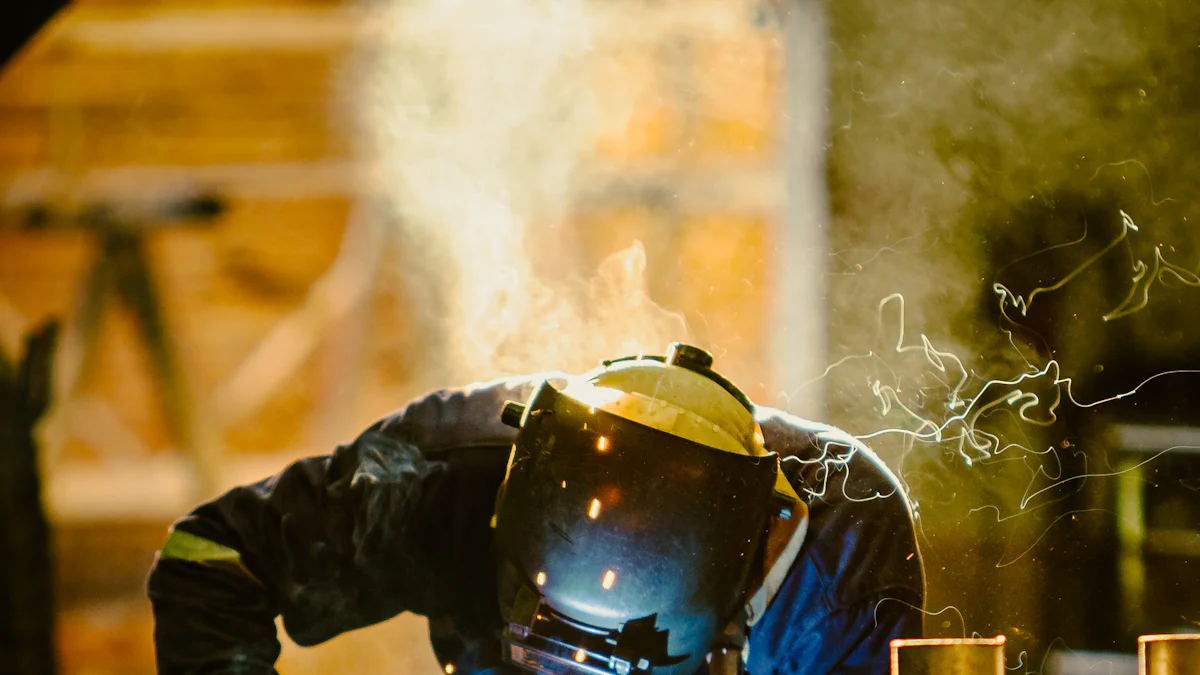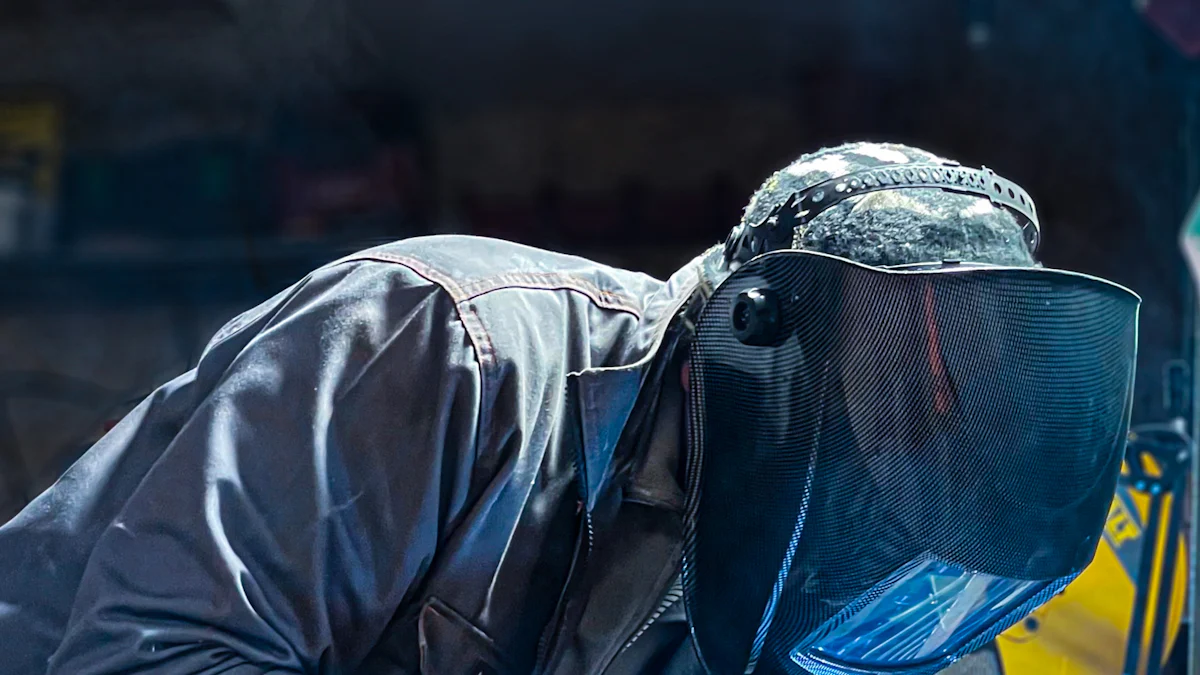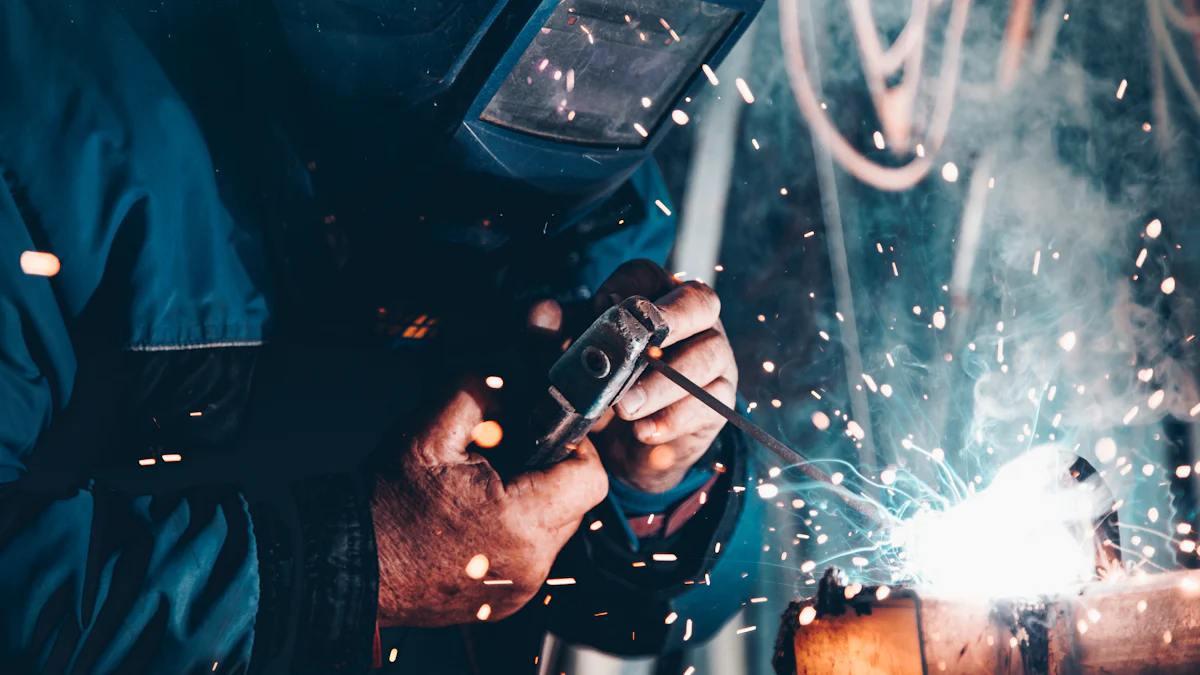
When you weld, protecting your eyes from harmful light is crucial. An auto-darkening welding helmet uses advanced sensors to detect light intensity. It instantly adjusts the lens to a darker shade, shielding your eyes from ultraviolet and infrared rays. This technology ensures safety and convenience. Learn more at https://www.tynoweld.com/auto-darkening-welding-helmet/.
Key Takeaways
- Auto-darkening helmets shield your eyes by quickly darkening the lens. They block harmful UV and IR rays when bright light appears.
- These helmets help you work faster by keeping your view clear. You don’t need to lift the helmet up and down, making welding more accurate.
- You can adjust the helmet’s shade and sensitivity settings. This makes it useful for different welding jobs and helps prevent eye strain.
Key Components of an Auto-Darkening Welding Helmet

Understanding the parts of an auto-darkening welding helmet helps you appreciate how it works to protect your eyes. Each component plays a vital role in ensuring safety and performance.
Light Sensors
Light sensors are the “eyes” of the helmet. They detect the intensity of light from the welding arc. When the sensors pick up bright light, they send a signal to the lens to darken instantly. Most helmets have two to four sensors. More sensors mean better coverage, especially when you weld in tight spaces or awkward positions.
Auto-Darkening Filters (ADF)
The auto-darkening filter is the heart of the helmet. It adjusts the lens shade based on the light detected by the sensors. This filter blocks harmful ultraviolet (UV) and infrared (IR) rays, even when the lens is in its clear state. With an ADF, you don’t need to flip the helmet up and down, which saves time and keeps your hands free.
Liquid Crystal Display (LCD) Technology
The lens uses liquid crystal display technology to switch between light and dark states. The LCD layers align or scatter light depending on the signal from the sensors. This process happens in milliseconds, ensuring your eyes stay protected without delay. The LCD also provides a clear view of your work when the lens is not darkened.
Power Source (Battery and Solar Cells)
Auto-darkening welding helmets rely on a power source to operate. Most models use a combination of batteries and solar cells. The batteries provide consistent power, while the solar cells recharge during welding. This dual system ensures the helmet works reliably for extended periods.
Tip: Regularly check the battery life and clean the solar cells to keep your helmet functioning at its best.
How Auto-Darkening Welding Helmets Work

Light Detection and Activation
An auto-darkening welding helmet starts working the moment you strike an arc. The light sensors on the helmet detect the intense brightness from the welding process. These sensors send a signal to the auto-darkening filter (ADF) to activate. This happens almost instantly, ensuring your eyes are protected from harmful ultraviolet and infrared rays. The number of sensors on your helmet affects how well it detects light, especially in challenging positions.
Lens Darkening Process
Once the sensors detect the welding arc, the lens darkens to a preselected shade. The liquid crystal display (LCD) layers inside the lens adjust their alignment to block out excessive light. This process takes only milliseconds, so you won’t experience any delay. The lens remains dark as long as the sensors detect the welding arc, giving you continuous protection and a clear view of your work.
Transition Back to a Clear State
When you stop welding, the helmet’s lens quickly transitions back to its clear state. This allows you to inspect your work without removing the helmet. The transition speed is adjustable on most helmets, letting you choose how quickly the lens returns to normal. Faster transitions are ideal for repetitive tasks, while slower transitions can reduce eye strain.
Adjustable Settings for User Preferences
Auto-darkening welding helmets offer adjustable settings to suit your needs. You can customize the shade level, sensitivity, and delay time. The shade level determines how dark the lens becomes during welding. Sensitivity controls how easily the sensors detect light. Delay time adjusts how long the lens stays dark after welding stops. These features make the helmet versatile for different welding applications and environments.
Benefits of Using an Auto-Darkening Welding Helmet
Enhanced Safety and Eye Protection
An auto-darkening welding helmet protects your eyes from harmful ultraviolet (UV) and infrared (IR) rays at all times. Even when the lens is in its clear state, it blocks these dangerous rays. This constant protection reduces the risk of eye injuries like arc flash. The helmet’s sensors ensure the lens darkens instantly when you start welding, so your eyes are never exposed to intense light. You can focus on your work without worrying about sudden flashes or glare.
Improved Precision and Efficiency
With an auto-darkening welding helmet, you no longer need to flip the helmet up and down. This feature allows you to position your tools and materials accurately before welding. The clear view provided by the lens in its inactive state helps you align your workpieces with precision. When the lens darkens, you can see the welding arc and joint clearly, improving the quality of your welds. This efficiency saves time and enhances your productivity.
Reduced Fatigue and Increased Comfort
Wearing an auto-darkening welding helmet reduces physical strain. You don’t need to repeatedly lift and lower the helmet, which minimizes neck and shoulder fatigue. Many helmets are lightweight and ergonomically designed, ensuring comfort during long welding sessions. Adjustable settings let you customize the helmet to suit your preferences, further enhancing your comfort.
Versatility for Different Welding Applications
Auto-darkening welding helmets are suitable for various welding tasks. You can adjust the shade level, sensitivity, and delay time to match different welding techniques, such as MIG, TIG, or stick welding. This versatility makes the helmet a valuable tool for both professional welders and hobbyists. Whether you’re working on a large project or a small repair, the helmet adapts to your needs.
An auto-darkening welding helmet is a must-have for anyone working with welding tools. It combines advanced technology with user-friendly features to protect your eyes and improve your work quality. Its ability to adapt to changing light conditions ensures safety and comfort. Whether you’re a beginner or a professional, this helmet enhances your welding experience.
FAQ
What is the lifespan of an auto-darkening welding helmet?
Most helmets last 5-7 years with proper care. Regularly check the battery and clean the sensors to extend its lifespan.
Can you use an auto-darkening helmet for all welding types?
Yes, you can. Adjust the shade level and sensitivity to match different welding techniques like MIG, TIG, or stick welding.
How do you maintain an auto-darkening welding helmet?
Clean the lens and sensors with a soft cloth. Replace batteries when needed. Store the helmet in a cool, dry place to prevent damage.
Post time: Feb-05-2025

